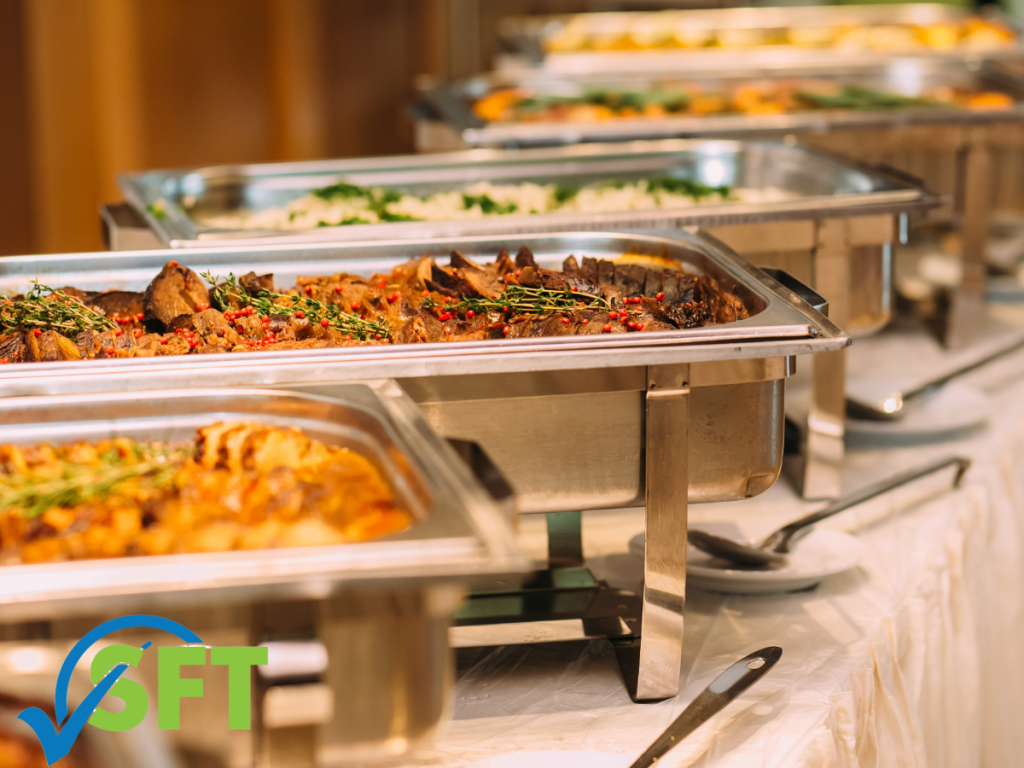As a food manager in Minnesota, you understand the unique appeal of a buffet service. It offers variety and abundance that customers love. However, that same open-service style presents significant food safety challenges, with the primary risk being buffet cross-contamination. A single misstep can compromise an entire food line, potentially leading to a foodborne illness outbreak that could harm your customers and your reputation. Implementing a robust, multi-layered strategy is not just good practice—it’s essential for protecting everyone.
The nature of a self-service line means dozens of people interact with the serving utensils and food, creating numerous opportunities for germs to spread. Therefore, your prevention plan must be comprehensive, covering everything from staff hygiene to the layout of the buffet itself.
Build a Foundation of Impeccable Hygiene

The first line of defense against foodborne illness is always your team. Pathogens are most commonly transferred by hands, making strict hygiene protocols the cornerstone of buffet safety. These standards must be non-negotiable for every person working in your establishment.
- Implement Proper Handwashing: This is the single most critical habit. Staff must wash their hands with soap and warm water for at least 20 seconds before their shift, after using the restroom, after handling raw meat, and any time they switching tasks.
- Train on Correct Glove Use: Disposable gloves can provide a significant barrier, but only when used correctly. Staff should wash their hands before putting on gloves and change them frequently, especially after handling allergens or raw foods. A glove is only as clean as the last thing it touched.
- Maintain High Personal Hygiene Standards: This includes wearing clean uniforms, using effective hair restraints like hairnets or hats, and removing jewelry that could harbor bacteria or fall into food.
Master Food Handling to Stop Buffet Cross-Contamination
How food is held, stored, and served is critical. Even with clean hands, improper food handling can quickly turn a beautiful buffet into a high-risk zone. Your strategy must focus on controlling temperature and preventing contact between different food types.
- Monitor Temperatures Vigilantly: Bacteria multiply rapidly in the “temperature danger zone” between 41°F and 135°F. Use calibrated food thermometers to ensure hot foods stay at or above 135°F and cold foods stay at or below 41°F.
- Separate Raw and Ready-to-Eat Foods: This rule is absolute, from the walk-in cooler to the serving line. Store raw meats, poultry, and seafood below and away from ready-to-eat items to prevent juices from dripping and contaminating them. Use color-coded cutting boards and utensils for preparation.
- Enforce the First-In, First-Out (FIFO) Rule: Always use the oldest stock before the newest stock. Using this method ensures the freshest food is served and reduces the risk of using expired or unsafe products.
Control the Point of Service



The buffet line itself is where your staff, your food, and your customers all interact. Managing this environment is crucial for preventing the direct and indirect spread of contaminants. Small, consistent actions in this area can make a significant difference.
- Provide a Utensil for Every Dish: Never allow a single spoon or pair of tongs to be used for more than one dish. This prevents the transfer of allergens and germs between food items. Keep a stock of clean utensils ready and replace any that are dropped or mishandled immediately.
- Use Protective Sneeze Guards: Sneeze guards are a physical barrier required by health codes for a reason. They protect food from respiratory droplets and other physical contaminants that may come into contact with customers. Ensure they are clean and properly positioned.
- Encourage Clean Plates for Refills: Politely ask customers to use a fresh plate each time they return to the buffet. This simple step prevents a used plate, which has come into contact with a customer’s hands and saliva, from contaminating the serving utensils and, subsequently, the entire dish.
Preventing buffet cross-contamination requires continuous effort and a well-trained team. These systems are your best defense against foodborne illness and are essential to running a safe and successful buffet service.
Are you confident your team understands every risk, from the temperature danger zone to allergen management? Safe Food Training provides personalized, instructor-led food safety courses for Minnesota food managers and their staff.
Book your initial certification or continuing education session today and build a culture of safety in your establishment.


